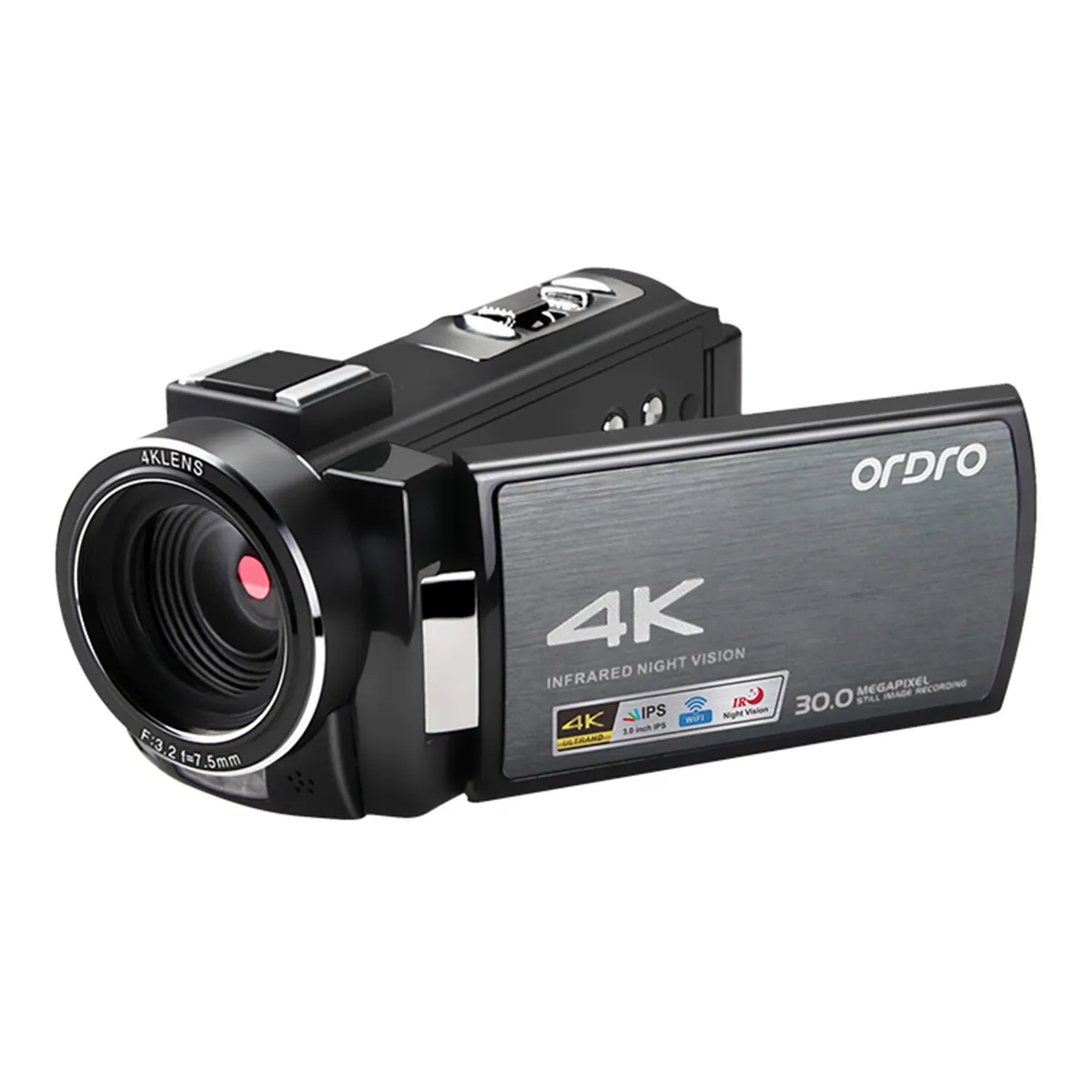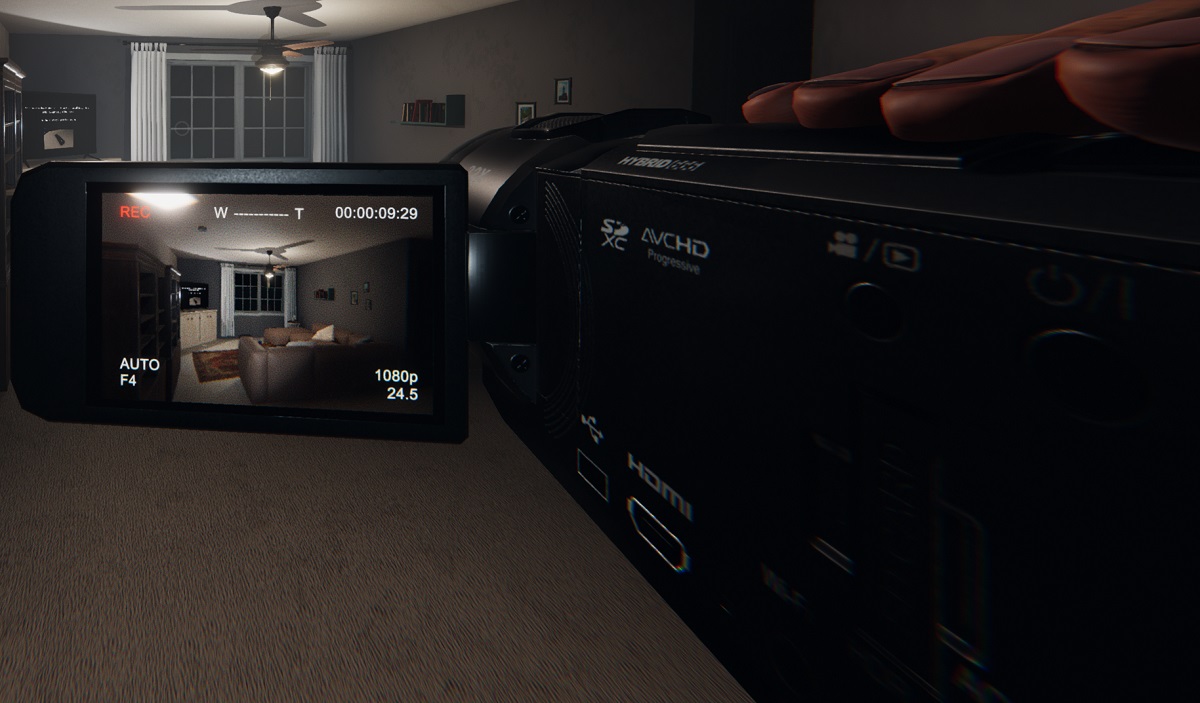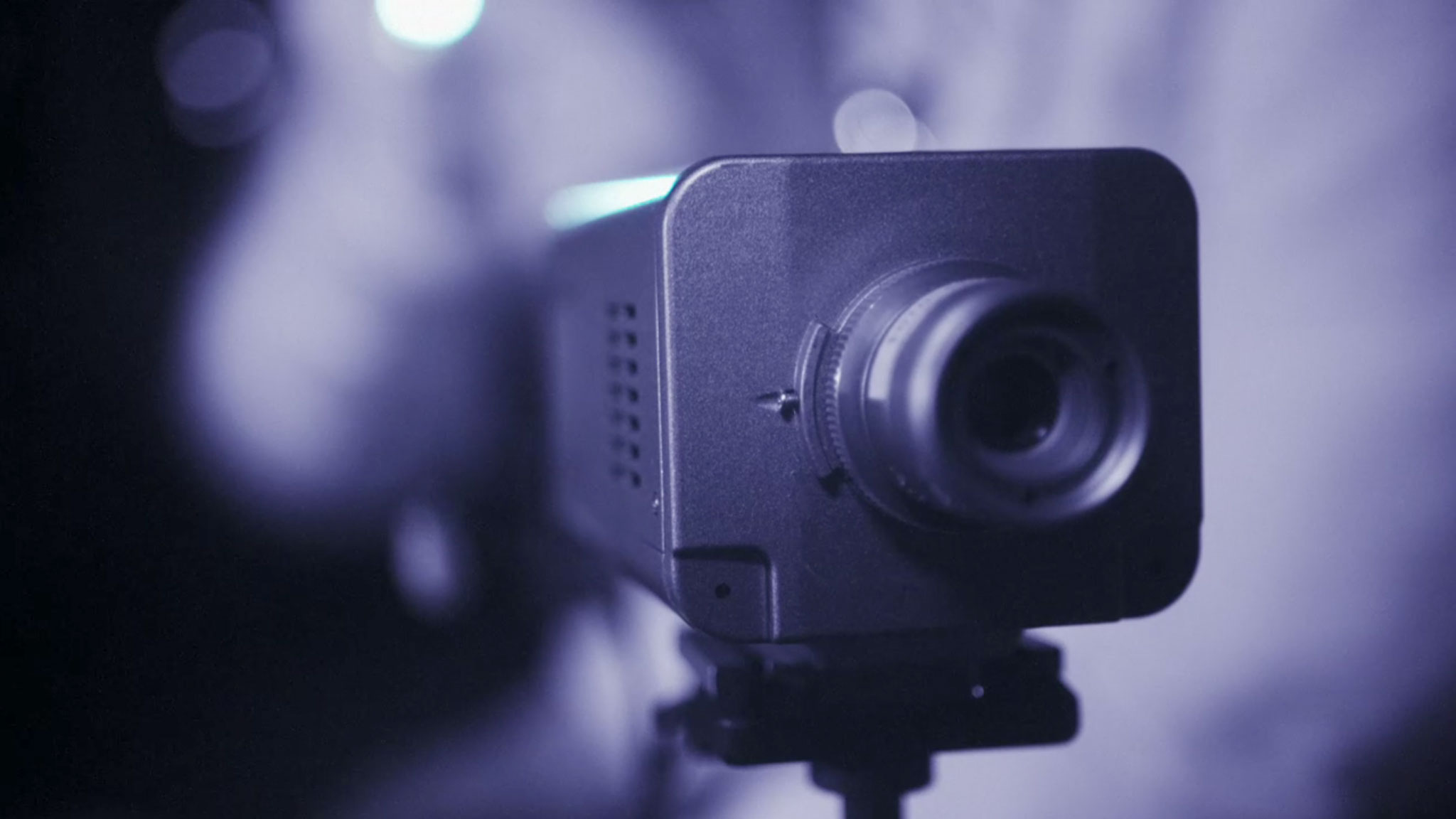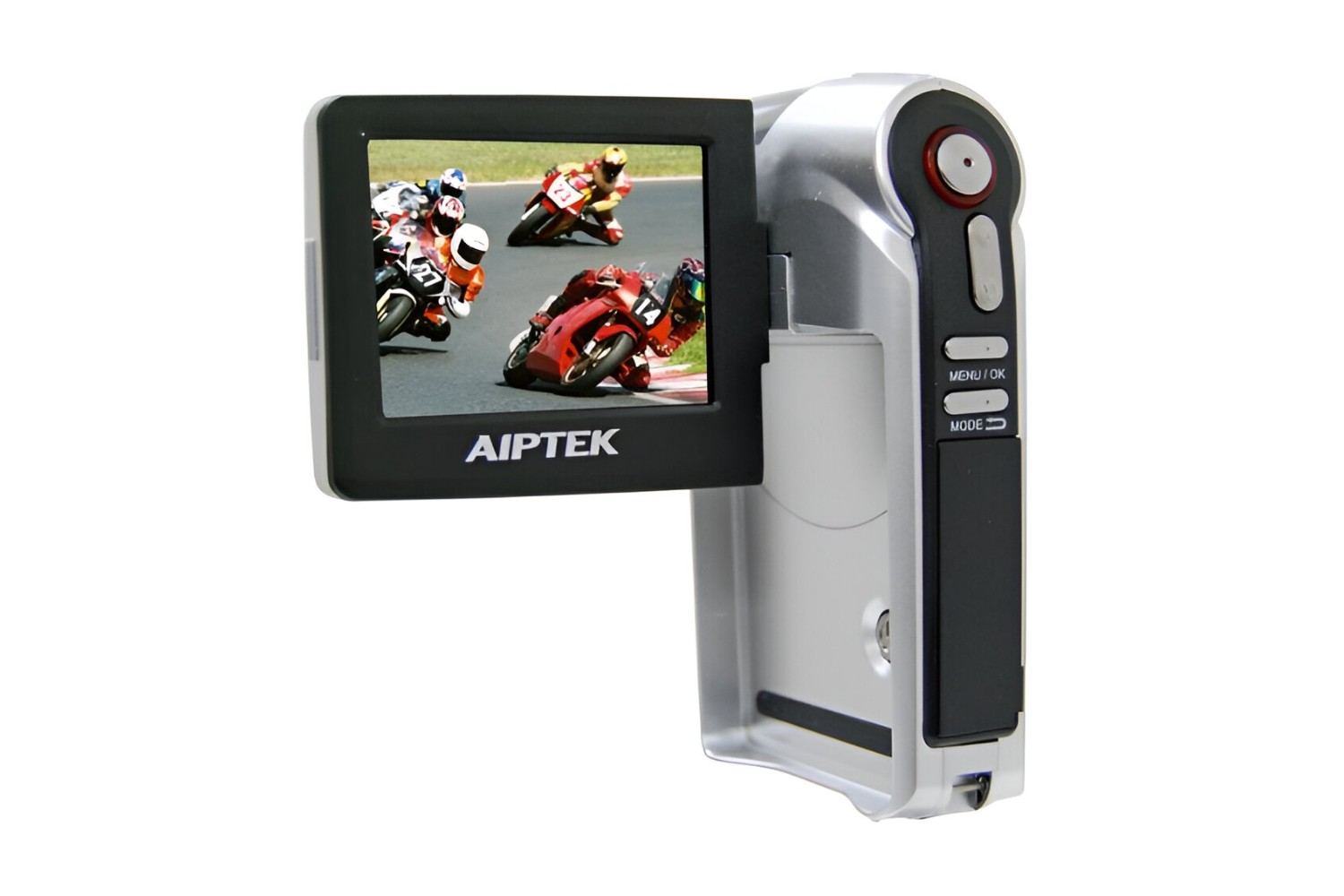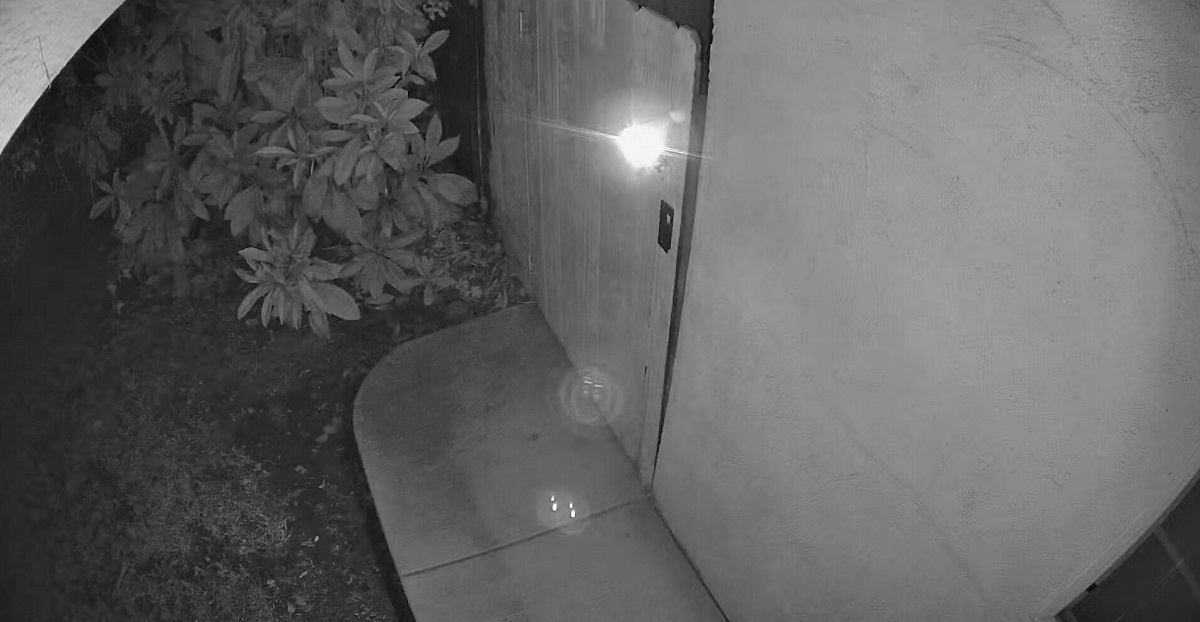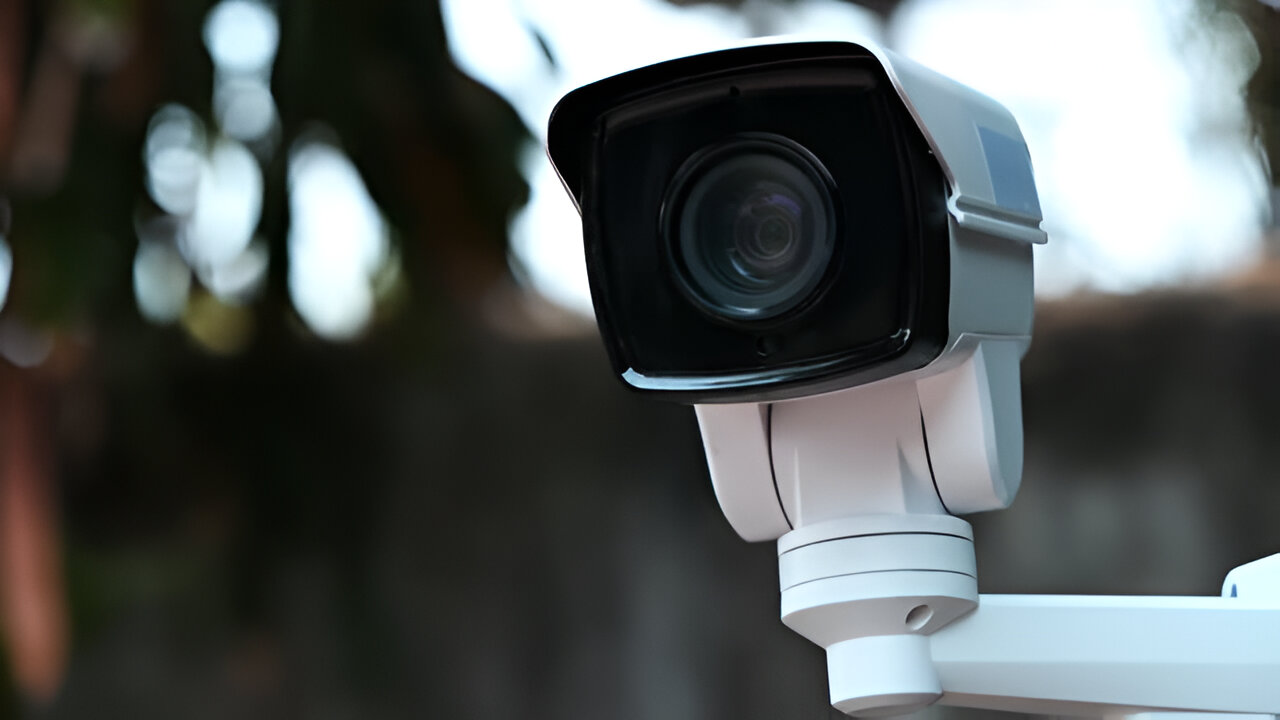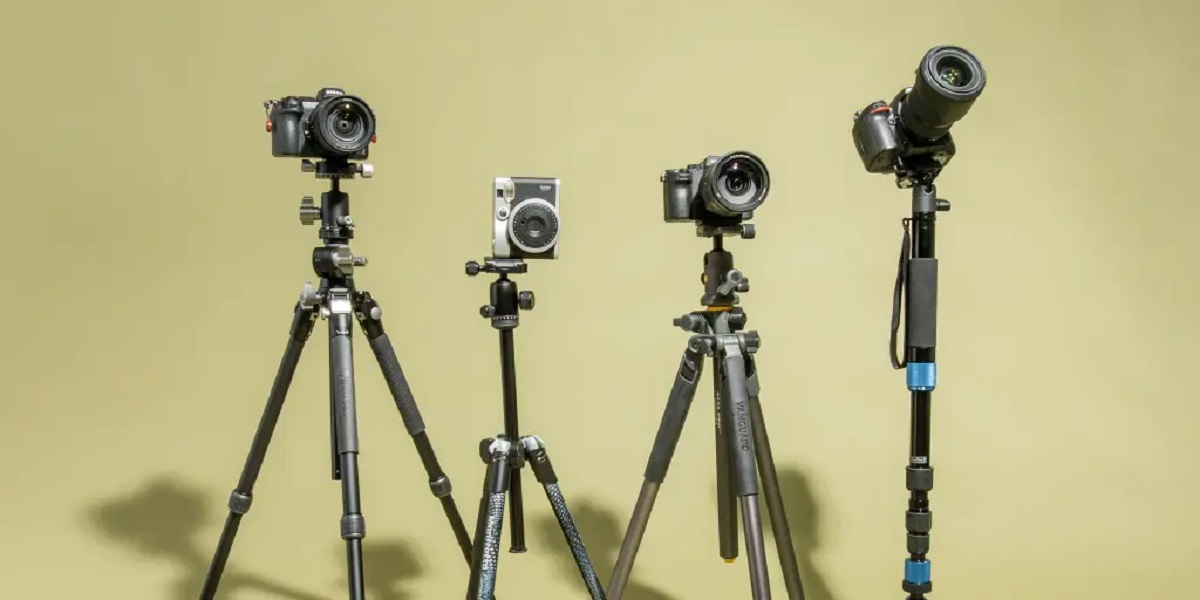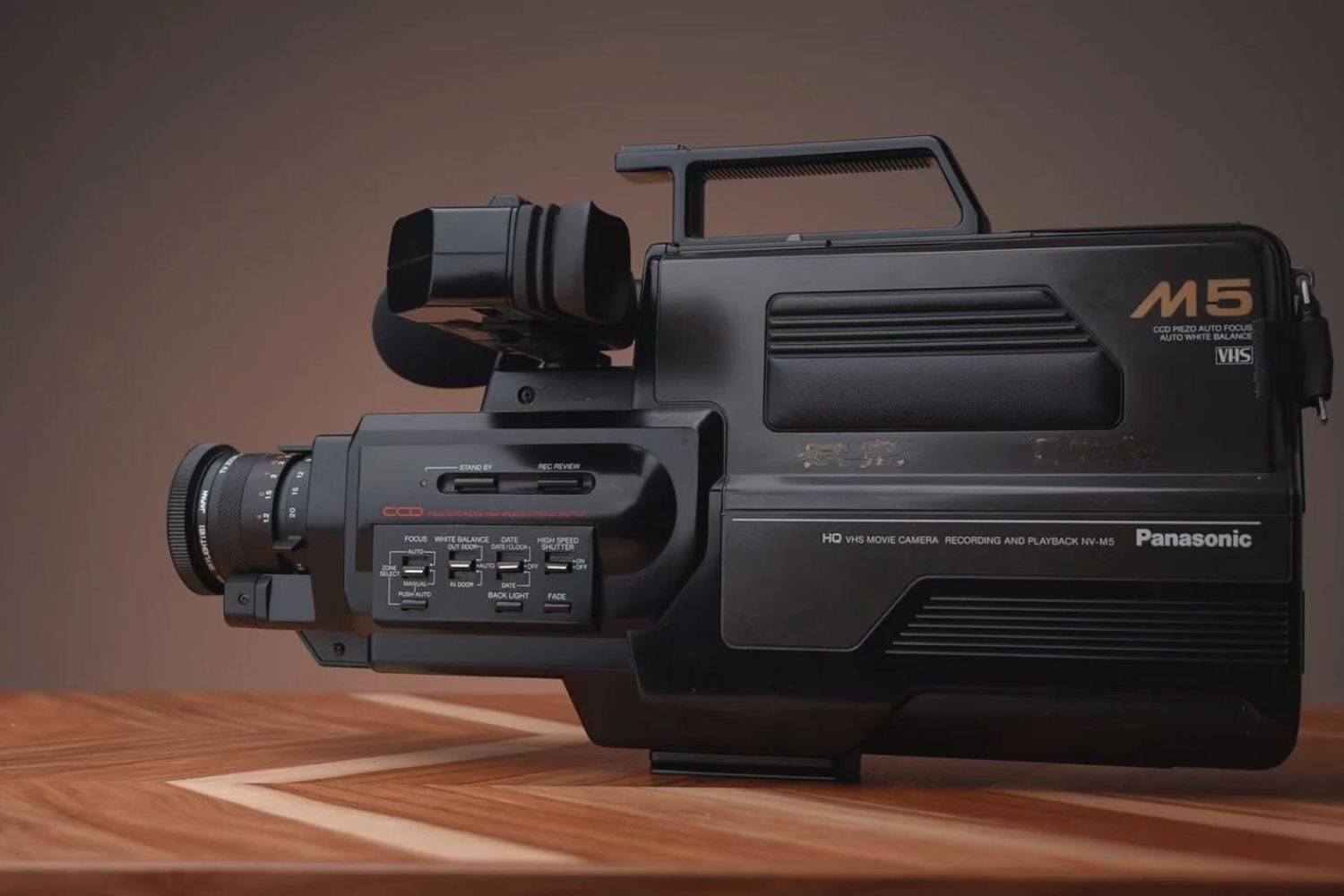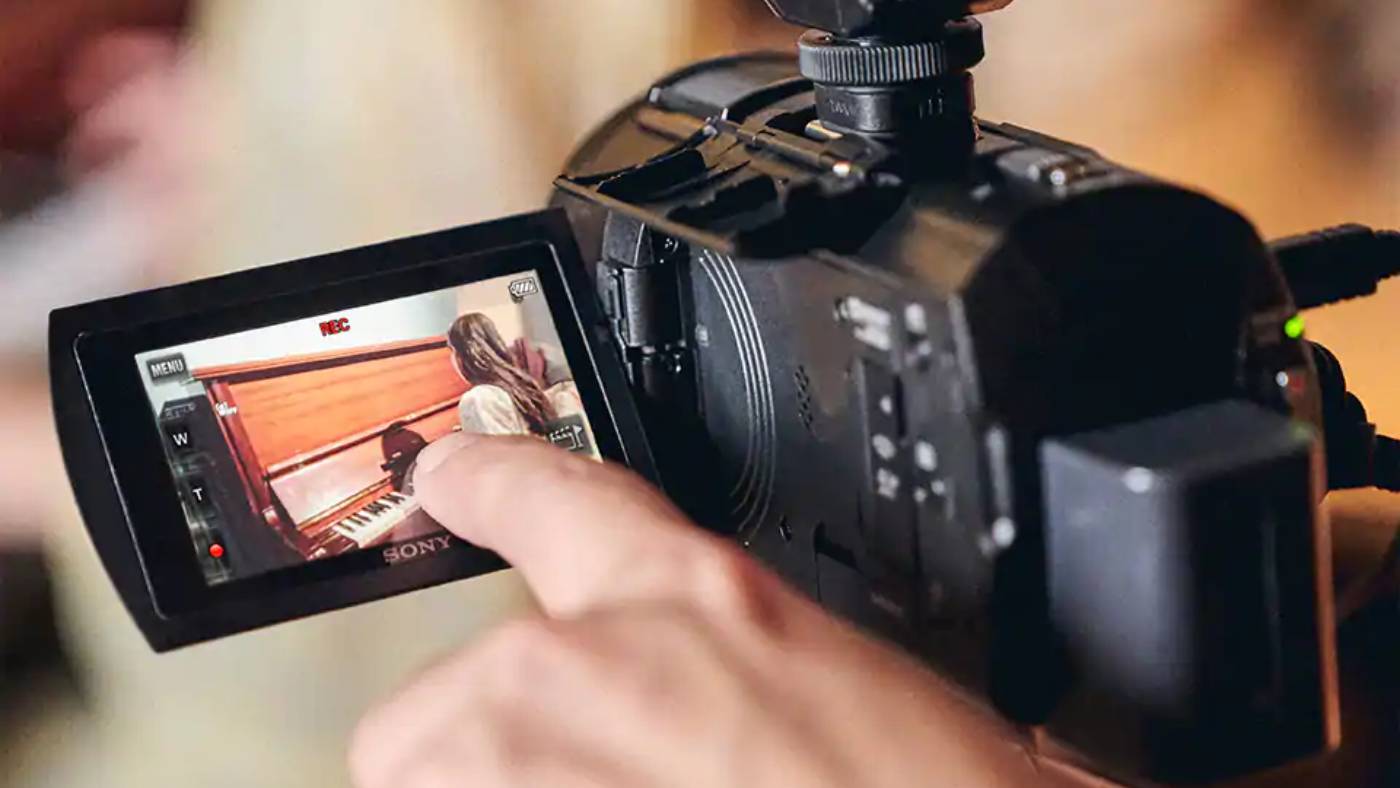Introduction
Welcome to the fascinating world of night vision technology and camcorders! Have you ever wanted to capture the mysterious allure of the night in stunning detail? With the right equipment and a touch of ingenuity, you can unlock the secrets hidden in the darkness and bring them to life on screen. In this guide, we will explore the intricacies of transforming a standard camcorder into a powerful night vision recording device. Whether you're an amateur filmmaker, a nature enthusiast, or a curious hobbyist, the ability to record clear, high-quality footage in low-light conditions can open up a world of creative possibilities.
As the sun sets and the world transitions into darkness, traditional recording methods often struggle to capture the essence of the night. However, by harnessing the principles of night vision technology, you can peer into the shadows and reveal the nocturnal activities that unfold beyond the reach of conventional cameras. This guide will take you on a journey through the fundamental concepts of night vision, the selection of an appropriate camcorder, the process of modifying it for night vision capabilities, and the essential tips for maximizing the potential of your newly enhanced equipment.
Get ready to embark on an adventure that will expand your understanding of both technology and the natural world. By the time you've completed this guide, you'll be equipped with the knowledge and skills to transform your camcorder into a tool that can capture the beauty and mystery of the night with unparalleled clarity and detail. So, grab your camcorder, prepare to embrace the darkness, and let's illuminate the secrets of night vision together.
Understanding Night Vision Technology
Before delving into the process of modifying a camcorder for night vision, it’s essential to grasp the underlying principles that enable this remarkable technology to function. Night vision devices, including those used in camcorders, rely on the amplification of ambient light to produce visible images in low-light or no-light conditions. This process involves several key components, each playing a crucial role in enhancing the visibility of nighttime scenes.
One of the primary elements of night vision technology is the image intensifier tube, which serves as the heart of the system. This tube works by capturing incoming photons of light through a photocathode, converting them into electrons, and then amplifying these electrons to create a visible image. The intensified image is then projected onto a phosphor screen, where it appears as a green-hued representation of the nighttime environment. The distinctive green color is a result of the phosphor screen’s characteristics and the human eye’s heightened sensitivity to green light, making it the optimal choice for night vision displays.
Furthermore, understanding the two prevalent types of night vision technology, namely, image enhancement and thermal imaging, is crucial for determining the most suitable approach for your specific recording needs. Image enhancement night vision relies on ambient light sources, such as moonlight or starlight, to render visible images, while thermal imaging detects heat signatures to create a visual representation of the environment. Both methods have distinct advantages and limitations, and selecting the right technology for your camcorder modifications is pivotal in achieving the desired results.
By comprehending the fundamental principles and variations of night vision technology, you will be better equipped to make informed decisions regarding the modification and utilization of your camcorder for night vision purposes. With this knowledge as your foundation, you’re poised to embark on the exciting journey of transforming your camcorder into a powerful tool for capturing the mysteries of the night.
Choosing the Right Camcorder
When embarking on the endeavor of creating a night vision-enabled camcorder, selecting the appropriate base device is a crucial first step. Not all camcorders are created equal, and certain features and specifications are essential for facilitating successful modifications for night vision recording. Consider the following factors when choosing the right camcorder for this purpose:
- Low-Light Performance: Opt for a camcorder with exceptional low-light performance. Look for models with larger image sensors, as they are better equipped to capture and process light in dimly lit environments. Additionally, camcorders with lower aperture values allow more light to reach the sensor, enhancing their suitability for night vision modifications.
- Manual Controls: Prioritize camcorders that offer extensive manual controls, including adjustable shutter speed, aperture, and gain settings. These features are instrumental in fine-tuning the device for optimal night vision functionality and ensuring that you have full control over the recording process in low-light conditions.
- External Microphone Support: Clear audio is essential for creating compelling night vision footage. Select a camcorder that supports external microphones to capture high-quality sound alongside your enhanced visuals.
- Compatibility with Night Vision Modifications: Research the compatibility of potential camcorders with aftermarket night vision modification kits. Certain models may be more conducive to modification due to their internal components and design, making the modification process more straightforward and effective.
- Battery Life and Power Options: Long-lasting battery life and versatile power options are advantageous for extended night vision recording sessions. Look for camcorders with efficient power management and the ability to utilize external power sources for prolonged use.
By carefully evaluating these factors and conducting thorough research on available camcorder models, you can identify the ideal candidate for modification into a capable night vision recording device. Keep in mind that the chosen camcorder serves as the foundation for your night vision endeavors, and selecting a suitable model sets the stage for successful modifications and exceptional nocturnal recording experiences.
Modifying the Camcorder for Night Vision
Once you have selected the appropriate camcorder, the next phase involves the intricate process of modifying the device to enable night vision functionality. This transformation typically entails the integration of specialized components and adjustments to the camcorder’s internal mechanisms to enhance its low-light recording capabilities. Here are the key steps involved in modifying a camcorder for night vision:
- Disassembly and Component Assessment: Begin by carefully disassembling the camcorder to gain access to its internal components. Assess the layout and functionality of the existing hardware, identifying areas where modifications can be made to accommodate night vision enhancements.
- Integration of Infrared (IR) Illuminators: Incorporate infrared illuminators into the camcorder to introduce additional light sources that are invisible to the human eye but essential for night vision recording. These illuminators emit infrared light, which the camcorder’s modified sensor can detect and amplify, resulting in enhanced visibility in low-light environments.
- IR-Cut Filter Removal or Replacement: Modify or remove the camcorder’s IR-cut filter, which is designed to block infrared light from reaching the sensor during standard recording. By adjusting or eliminating this filter, the camcorder becomes capable of capturing infrared light, a critical element for night vision functionality.
- Optical and Sensor Adjustments: Fine-tune the camcorder’s optics and sensor settings to optimize its performance in low-light conditions. This may involve adjusting focus mechanisms, sensor sensitivity, and exposure settings to ensure clear and detailed night vision footage.
- Integration of Night Vision Display: Optionally, integrate a night vision display or monitor to facilitate real-time viewing of the enhanced nighttime imagery captured by the modified camcorder. This addition allows for precise framing and monitoring of recordings in challenging lighting situations.
It’s important to approach the modification process with precision and attention to detail, as any alterations to the camcorder’s internal components can significantly impact its overall performance. By following these steps and potentially seeking guidance from experts in night vision modifications, you can effectively transform your camcorder into a versatile tool capable of capturing captivating night vision footage with exceptional clarity and detail.
Testing and Adjusting the Night Vision Function
After completing the modification process, thorough testing and meticulous adjustments are essential to ensure that the camcorder’s night vision functionality operates optimally in various low-light scenarios. This phase allows you to fine-tune the modified device, address any potential issues, and maximize its performance for capturing compelling night vision footage. Here are the key steps for testing and adjusting the night vision function of your modified camcorder:
- Low-Light Environment Testing: Begin by testing the modified camcorder in diverse low-light environments, such as dimly lit rooms, outdoor settings at dusk, or areas with minimal artificial lighting. Assess the clarity, brightness, and overall visibility of the recorded footage to gauge the effectiveness of the night vision modifications.
- IR Illuminator Performance Evaluation: Evaluate the performance of the integrated infrared illuminators by recording in environments with varying levels of darkness. Verify that the illuminators effectively enhance the visibility of subjects and objects that would otherwise be challenging to discern in standard recording conditions.
- Image Quality Assessment: Pay close attention to the image quality produced by the modified camcorder during night vision recording. Look for sharpness, detail, and accurate color representation, if applicable, to ensure that the footage meets your expectations for high-quality nocturnal imagery.
- Adjustment of Settings and Components: Utilize the camcorder’s manual controls and modification-specific settings to make necessary adjustments. Fine-tune focus, exposure, and infrared sensitivity settings to optimize the device’s performance in different low-light scenarios, ensuring that the recorded footage meets your desired standards.
- Real-Time Monitoring and Feedback: If a night vision display or monitor is integrated, utilize it to monitor the live feed from the modified camcorder. This real-time monitoring provides valuable insights into the device’s performance, allowing for immediate adjustments and refinements during recording sessions.
By rigorously testing and meticulously adjusting the night vision function of your modified camcorder, you can fine-tune its capabilities to deliver exceptional performance in low-light conditions. This iterative process of evaluation and refinement empowers you to capture captivating night vision footage with clarity, detail, and visual impact, expanding the creative possibilities of your recording endeavors.
Tips for Using Camcorder Night Vision
As you venture into the realm of camcorder night vision, it’s essential to familiarize yourself with valuable tips and best practices that can enhance your experience and the quality of your nocturnal recordings. Leveraging these tips will enable you to maximize the potential of your modified camcorder and capture stunning night vision footage with precision and artistry. Here are key tips for effectively using camcorder night vision:
- Optimize Ambient Lighting: While night vision technology excels in low-light conditions, incorporating minimal ambient lighting, such as moonlight or distant artificial light sources, can enhance the overall visual quality of your recordings. Experiment with different lighting levels to achieve the desired atmospheric effect in your footage.
- Stabilize Your Camcorder: Stability is crucial for capturing clear and steady night vision footage. Use a tripod or stabilizing rig to minimize camera shake and ensure smooth, professional-looking recordings, especially in prolonged low-light shooting scenarios.
- Experiment with Infrared Illuminators: Familiarize yourself with the optimal positioning and intensity settings of the integrated infrared illuminators. Adjusting the illuminators to suit the specific lighting conditions of your environment can significantly enhance the visibility and detail of subjects in your night vision recordings.
- Master Manual Controls: Take full advantage of the manual controls offered by your modified camcorder. Fine-tune settings such as focus, exposure, and gain to adapt to the nuances of different low-light scenes, allowing you to capture nuanced and compelling night vision footage.
- Conduct Test Recordings: Prior to important night vision recording sessions, conduct test recordings in various low-light environments to familiarize yourself with the performance of your modified camcorder. This practice allows you to identify and address any potential challenges or adjustments needed before capturing critical footage.
- Consider Audio Capture: While focusing on visual elements, don’t overlook the importance of high-quality audio. Utilize external microphones or audio recording equipment to complement your night vision footage with clear, immersive sound, enriching the overall viewing experience.
- Embrace Creativity: Night vision technology offers a unique perspective on the world after dark. Embrace the creative opportunities it presents, experiment with unconventional compositions, and capture the enigmatic allure of nocturnal environments to create visually captivating and evocative footage.
By incorporating these tips into your approach to using camcorder night vision, you can elevate the quality and impact of your nighttime recordings, unlocking a realm of artistic expression and storytelling potential. Embrace the challenges and rewards of capturing the mysteries of the night through the lens of your modified camcorder, and let your creativity shine in the captivating world of nocturnal imagery.
Conclusion
Congratulations on embarking on the exhilarating journey of transforming a standard camcorder into a powerful tool for capturing the enigmatic beauty of the night through the marvels of night vision technology. By delving into the intricacies of night vision principles, selecting the right camcorder, and skillfully modifying and optimizing its functionality, you have unlocked a world of creative possibilities that transcend the limitations of traditional recording methods.
As you venture into the realm of camcorder night vision, remember that meticulous attention to detail, patience, and a willingness to experiment are key to achieving exceptional results. The fusion of technology and creativity allows you to peer into the shadows, revealing the mysteries and wonders that unfold under the cloak of darkness. Whether you’re capturing the nocturnal activities of wildlife, documenting celestial phenomena, or exploring the haunting beauty of urban landscapes at night, your modified camcorder empowers you to capture these moments with unparalleled clarity and detail.
As you apply the tips and techniques outlined in this guide, remember to embrace the unique perspective that night vision offers. The ability to see and record the world in low-light conditions opens the door to a realm of visual storytelling that is both captivating and evocative. With each carefully framed shot and meticulously adjusted setting, you have the opportunity to craft immersive and mesmerizing visual narratives that transport viewers into the captivating world of the night.
By incorporating the knowledge and insights gained from this guide into your night vision endeavors, you are poised to create compelling and thought-provoking content that transcends the boundaries of traditional videography. Your modified camcorder is not just a recording device; it is a gateway to a realm of creativity and exploration that invites you to capture the essence of the night in all its mesmerizing glory.
So, as you venture forth with your modified camcorder in hand, may your nocturnal recordings be imbued with artistry, vision, and a deep appreciation for the captivating mysteries that unfold under the cloak of darkness. Let your creativity illuminate the night, and may your night vision adventures inspire and enthrall audiences with the mesmerizing beauty that thrives beyond the reach of daylight.







